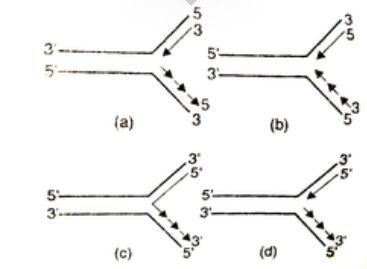Which one of the following diagrams correctly represents the energy levels in the p-type semiconductor?




The correct Answer is:C
To determine which diagram correctly represents the energy levels in a p-type semiconductor, we need to understand the structure and characteristics of p-type semiconductors.
1. Understanding p-type Semiconductors:
- A p-type semiconductor is created when a semiconductor material (like silicon) is doped with trivalent atoms (elements with three valence electrons, such as boron).
- In a p-type semiconductor, the majority charge carriers are holes (positive charge carriers), while the minority charge carriers are electrons.
2. Energy Bands in Semiconductors:
- Semiconductors have two main energy bands: the conduction band (CB) and the valence band (VB).
- The conduction band is where free electrons can move and conduct electricity, while the valence band is where electrons are bound to atoms.
3. Formation of the Acceptor Band:
- When trivalent atoms are introduced into the semiconductor, they create "holes" in the valence band. This results in the formation of an acceptor energy level (or acceptor band) that is located just above the valence band.
- The acceptor band is crucial because it allows holes to be created, which are the majority carriers in p-type semiconductors.
4. Identifying the Correct Diagram:
- We need to look for a diagram that shows the conduction band at the top, the valence band at the bottom, and an acceptor band close to the valence band.
- The correct representation will have the acceptor band positioned just above the valence band, indicating that it is easy for electrons from the valence band to jump into the acceptor band, creating holes.
5. Evaluating the Options:
- Option 1: Acceptors between conduction and valence band (Incorrect).
- Option 2: Acceptors close to conduction band (Incorrect).
- Option 3: Acceptors close to valence band (Correct).
- Option 4: Acceptors far from both bands (Incorrect).
6. Conclusion:
- The correct option that represents the energy levels in a p-type semiconductor is Option 3, where the acceptor band is close to the valence band.
- A p-type semiconductor is created when a semiconductor material (like silicon) is doped with trivalent atoms (elements with three valence electrons, such as boron).
- In a p-type semiconductor, the majority charge carriers are holes (positive charge carriers), while the minority charge carriers are electrons.
- Semiconductors have two main energy bands: the conduction band (CB) and the valence band (VB).
- The conduction band is where free electrons can move and conduct electricity, while the valence band is where electrons are bound to atoms.
- When trivalent atoms are introduced into the semiconductor, they create "holes" in the valence band. This results in the formation of an acceptor energy level (or acceptor band) that is located just above the valence band.
- The acceptor band is crucial because it allows holes to be created, which are the majority carriers in p-type semiconductors.
- We need to look for a diagram that shows the conduction band at the top, the valence band at the bottom, and an acceptor band close to the valence band.
- The correct representation will have the acceptor band positioned just above the valence band, indicating that it is easy for electrons from the valence band to jump into the acceptor band, creating holes.
- Option 1: Acceptors between conduction and valence band (Incorrect).
- Option 2: Acceptors close to conduction band (Incorrect).
- Option 3: Acceptors close to valence band (Correct).
- Option 4: Acceptors far from both bands (Incorrect).
- The correct option that represents the energy levels in a p-type semiconductor is Option 3, where the acceptor band is close to the valence band.
Topper's Solved these Questions
- SEMICONDUCTORSBOOK - RESONANCE ENGLISHCHAPTER - SEMICONDUCTORSEXERCISE - Exercise 3
88 Videos
- SEMICONDUCTORSBOOK - RESONANCE ENGLISHCHAPTER - SEMICONDUCTORSEXERCISE - Exercise
100 Videos
- REVISION DPPBOOK - RESONANCE ENGLISHCHAPTER - REVISION DPPEXERCISE - All Questions
463 Videos
- SIMPLE HARMONIC MOTION BOOK - RESONANCE ENGLISHCHAPTER - SIMPLE HARMONIC MOTION EXERCISE - Advanced Level Problems
13 Videos
Similar Questions
Knowledge Check
Which of the following reactions are correctly represented?
AR−CH=CH2+HCl→R−CH∣Cl−CH3BR−CH=CH2+HIH2O2−−→hvR−CH2−CH2−ICR−CH=CH2+HBrH2O2−−→hvR−CH2−CH2−BrDR−CH=CH2+HIH2O2−−→hvR−I∣CH−CH3
A metallic shell has a point charge 'q' kept inisde its cavity. Which one of the following diagrams correctly represents the electric lines of forces?
View SolutionWhich one of the following correctly represents the manner of replication of DNA?

View SolutionWhich one of the following correctly represents the manner of replication of DNA?

View SolutionWhich of the following correctly represents the order of atomic radii
View SolutionWhich one of the following diagrams represents the placentation in Dianthus
View SolutionWhich one of the following correctly represents the normal adult human dental formula:
View SolutionWhich of the following orders of ionic radii is correctly represented?
View Solution
